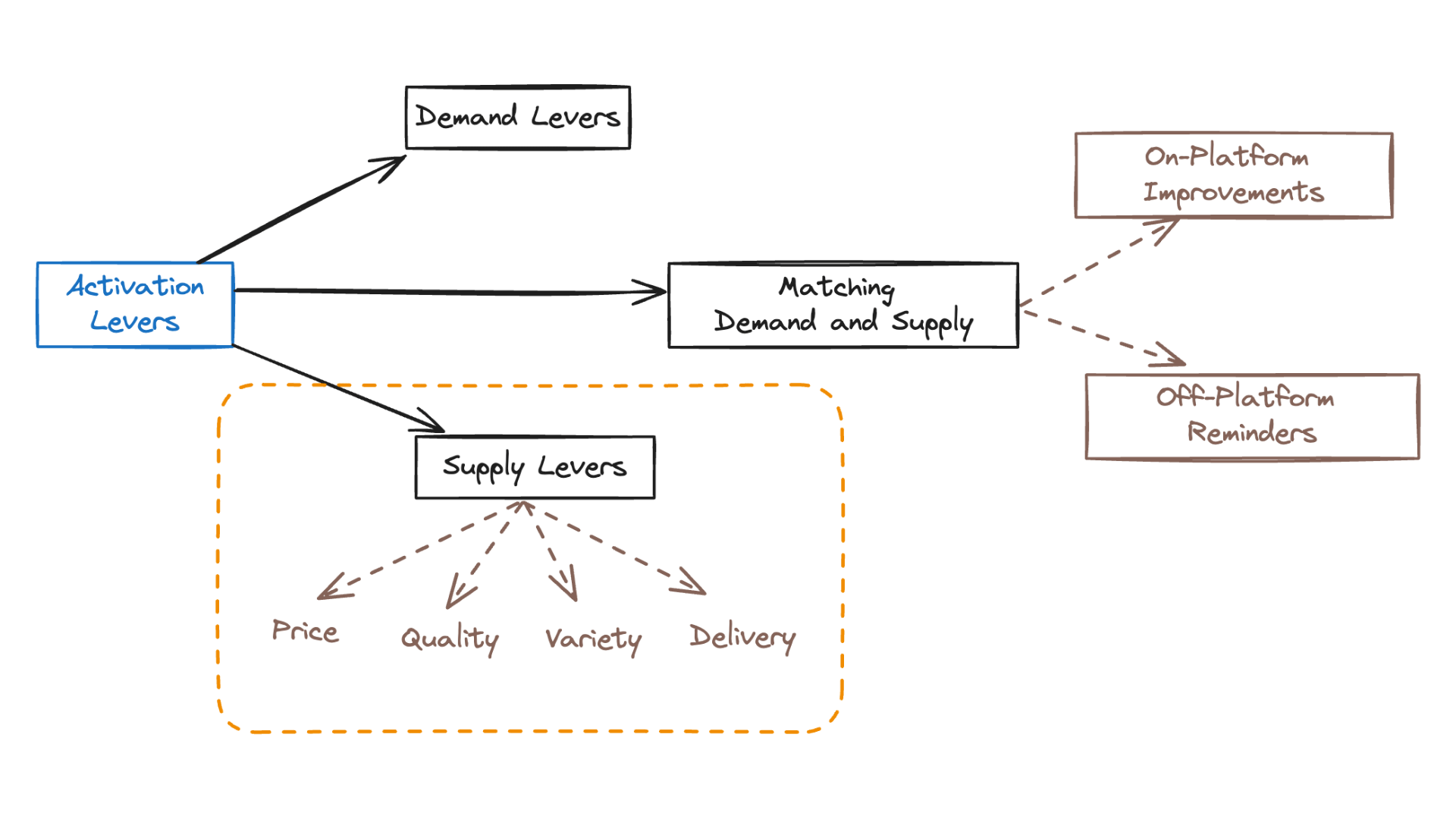How Do Supply-Side Levers Enhance Retention in D2C Brands?
While the fundamental supply-side levers—quality, variety, customer service experience, delivery, and price—retain their importance in the retention phase, their focus shifts to deepen customer relationships.
Let's look at the levers in order of relative importance, in context of D2C brands.

☞ Emphasizing Quality:
Quality is paramount for retention as consistent product excellence builds trust and fosters long-term customer loyalty. Regular enhancements and adherence to high-quality standards ensure products consistently meet customer expectations.
For example, a D2C skincare brand might implement stringent quality control checks and source premium ingredients to maintain product efficacy and safety.
☞ Expanding Product Variety:
Continuously diversifying product lines can keep the brand experience fresh and engaging. Introducing seasonal items or limited edition products based on customer preferences helps in retaining interest and encouraging repeat visits.
For instance, a D2C fashion brand might launch an exclusive summer collection that aligns with current trends and customer feedback.
☞ Enhancing Delivery Experience:
Reliable and efficient delivery is critical in D2C models. Innovating delivery options to include same-day or scheduled deliveries enhances convenience and satisfaction, solidifying customer loyalty.
For example, a D2C gourmet food company might offer scheduled delivery options that allow customers to receive products just in time for special occasions.
☞ Improving Customer Service Experience:
Excellent customer service is vital for retention. Providing timely and effective support resolves issues swiftly, maintaining customer trust.
A D2C electronics brand might offer dedicated support lines and quick repair services to address any customer issues promptly.
☞ Strategic Pricing:
While not the primary lever for retention, strategic pricing still plays a supporting role. Offering competitive pricing, matched with loyalty programs, can reinforce customer retention by adding perceived value.
For example, a D2C pet supplies brand could offer a loyalty program that rewards customers with discounts on future purchases, encouraging them to return.
Takeaway: By prioritizing these supply-side levers appropriately, D2C brands can effectively enhance customer satisfaction and loyalty, ensuring a solid base of returning customers. Each lever plays a distinct role in building a sustainable relationship with customers, contributing to the overall success and growth of the brand.